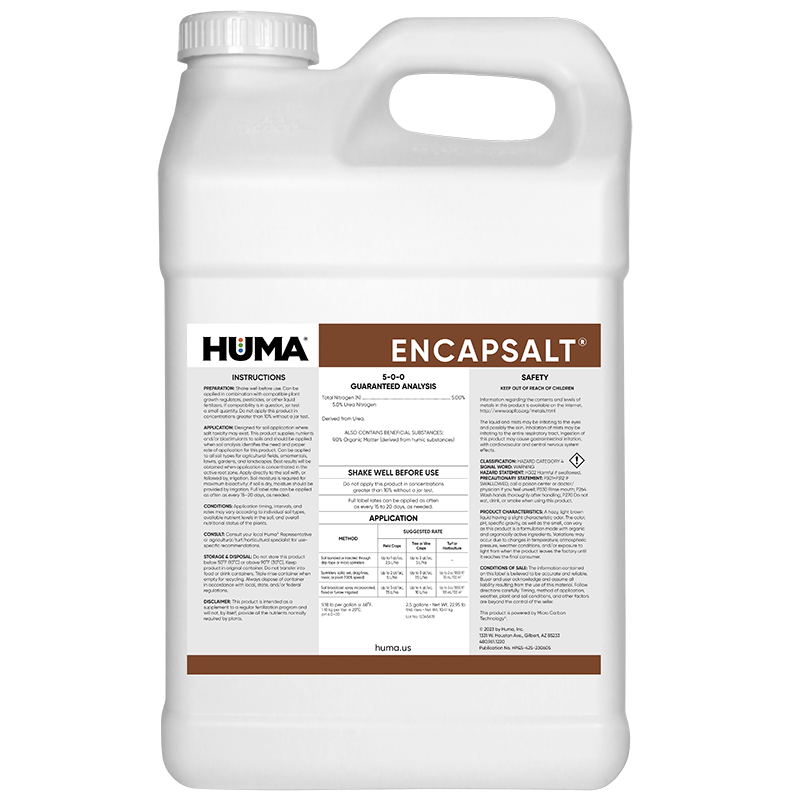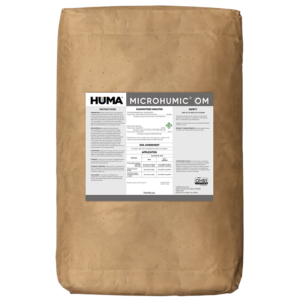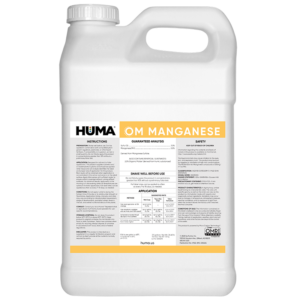ENCAPSALT®
Benefits of Use:
- Buffers salts in highly alkaline or sodium-rich soils
- Helps to improve the soil environment for aerobic biological growth
- Stimulates biomass development in all soil types
- Aerates soils and flocculates clays
- Increases water penetration in soils
- Increases nutrient availability for easier plant uptake
- Encourages root mass growth and depth penetration
Treats the Following Problems:
- Anaerobic soil conditions
- Low soil organic matter
- Poor water penetration
- Salt damage or toxicity to plants
- Inhibited root growth, small root mass
FAQs
Related Products
Related Case Studies

Huma® Improves Alfalfa Quality In the Southwest
Background All Huma® Inc. products are based on extractions of humic substances and other materials that can stimulate plant growth and improve crop quality. Objective The objective of this field trial was to evaluate the efficacy of applying Huma® products, specifically Encapsalt®, Super Phos®, Max Pak®, 44 Mag,® Vitol®, Super Nitro®, Breakout®, Fertil Soil®, Iro-Max®,

Huma® Improves Alfalfa Soil Biology In the Southwest
Background Industrial agriculture can degrade soil quality for crops by altering the total living microbial biomass of soil. Many practices and beneficial ag products have been introduced to the market to improve soil quality. Some of these products are humic substance-based products. Objective The objective of this trial was to evaluate the efficacy of applying
Related Blog Posts

Welcome to Huma®: Humic Solutions with a Human Touch
I am extremely proud to officially unveil our company’s new branding and name. We are now Huma®– a 50-year-old legacy ready to be reintroduced to the world! It is a strategic decision to shorten our name from Bio Huma Netics® (BHN) to Huma® and we are confident that this progressive move is in our company

The 1980s Farm Crisis: Will We Go Back to the Future?
The 1980s Farm Crisis: Will We Go Back to the Future? Ushered in by the USA Olympic hockey team’s “Miracle on Ice” and the flight of the space shuttle, Americana was running wild. The decade of excess featured a soaring stock market, booming GNP, and iconic movies and fashion. This was the era of Yuppies… the age of video players… when MTV actually played videos. The 1980s were totally awesome, for nearly everyone but farmers.

This Week In Ag #96
The greatest event in history took place at a farm setting, in a stable. The first to bear its witness were farmers, the shepherds. Merely coincidences? I think not. Here’s wishing you a Very Merry Christmas!






